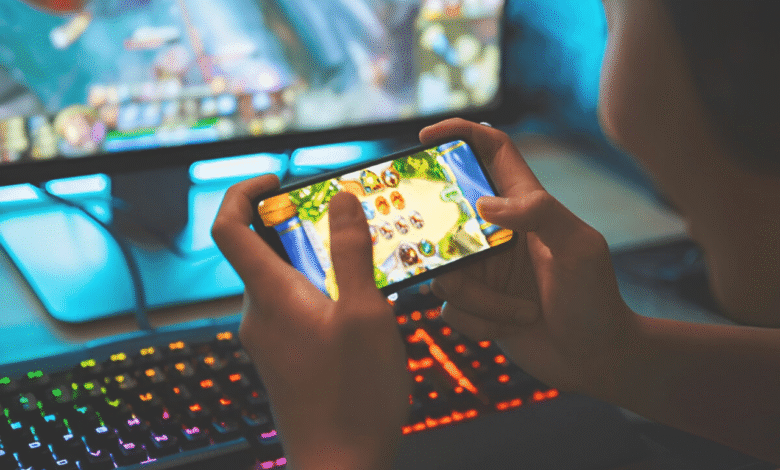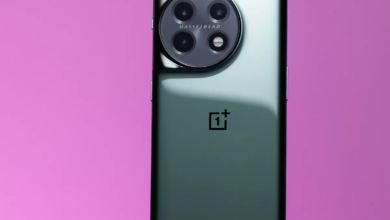Are Gaming Phones Worth the Price? Full Review Inside
Gaming phones are they worth the price? We compare performance, battery life & value against flagship smartphones in this detailed review.

Gaming phones have taken the smartphone industry by storm, promising unparalleled performance for mobile gamers. With high-refresh-rate displays, advanced cooling systems, and dedicated gaming features, these devices are designed to deliver a console-like experience in the palm of your hand. But with premium price tags often exceeding those of flagship smartphones, many wonder are they truly worth the investment, or are they just overhyped gadgets for a niche audience? This in-depth review will break down the pros and cons of gaming phones, comparing them to traditional smartphones to help you decide if they’re the right choice for your needs.
The debate over gaming phones versus regular flagships isn’t just about raw power it’s about value. While devices like the ASUS ROG Phone 8 Pro and Red Magic 9 Pro boast specs tailored for hardcore gaming, they often sacrifice camera quality, sleek design, and software polish in favor of performance. On the other hand, mainstream flagships like the iPhone 15 Pro Max or Samsung Galaxy S23 Ultra offer a more balanced experience but may throttle under extended gaming sessions. So, who should buy a gaming phone, and is the premium price justified.
Are Gaming Phones Worth the Price? Full Review Inside
What Makes a Gaming Phone Different?
Unlike conventional smartphones, gaming phones prioritize performance and user experience in high-demand gaming scenarios. One of the most noticeable differences is the display. Most gaming phones feature 144Hz or even 165Hz refresh rates, ensuring ultra-smooth visuals in fast-paced games like Call of Duty Mobile or Genshin Impact. In contrast, regular flagship phones usually max out at 120Hz. Another key distinction is thermal management. Intense gaming sessions generate significant heat, leading to throttling in standard devices. Gaming phones tackle this with advanced cooling systems vapor chambers, heat sinks, and even detachable cooling fans (like the ASUS ROG Phone’s AeroActive Cooler).
Raw Power vs. Optimization
At the heart of every gaming phone lies a top-tier chipset, usually the latest Snapdragon or Dimensity processor. The Snapdragon 8 Gen 3, for instance, powers many 2024 gaming phones, delivering desktop-level performance. Combined with up to 24GB of RAM, these devices handle multitasking and resource-heavy games effortlessly. However, raw specs alone don’t guarantee a superior experience. Software optimization plays a crucial role. Brands like ASUS and Nubia offer dedicated gaming modes that minimize background processes, block notifications, and enhance touch response rates. Some even allow CPU/GPU overclocking for enthusiasts seeking maximum frames per second (FPS).
Endurance vs. Fast Charging
Gaming consumes significant battery power, so gaming phones prioritize large capacities typically between 5,000mAh and 6,000mAh. However, high refresh rates and peak brightness can drain even these hefty batteries quickly. To compensate, manufacturers implement ultra-fast charging (up to 165W in devices like the Red Magic 9 Pro), allowing a full charge in under 20 minutes. While impressive, such rapid charging can degrade battery health over time. Standard flagships, with their more conservative 45W-65W charging, may offer better long-term battery durability.
Software and User Experience
Gaming-Optimized Interfaces
Gaming phones run heavily customized Android skins with dedicated gaming hubs like ASUS’s Armoury Crate or RedMagic’s Game Space. These provide one-tap performance modes, real-time hardware monitoring, and macro customization features mainstream phones lack. However, the aggressive gamer aesthetic and cluttered layouts may overwhelm casual users.
Daily Driver Limitations
The same aggressive Random Access Memory (RAM) management that boosts gaming performance can hamper multitasking. Some gaming modes permanently disable features like automatic brightness or gesture navigation. Camera apps often feel like afterthoughts with missing computational photography features.
Performance vs Polish Tradeoff
While gaming phones prioritize raw performance with minimal background processes, they often lag in software refinement. Frequent stutters in regular UI use, slower updates, and inconsistent animations are common sacrifices. Flagships like Pixels or Galaxies offer buttery-smooth daily performance despite slightly lower gaming FPS.
Special Gaming Features
Unique software additions like touch sensitivity boosters (up to 720Hz sampling), per-game performance profiles, and notification blockers provide competitive edges. Some models even offer desktop modes for streaming, but these niche features come at the cost of broader ecosystem integration.
Update Reliability Concerns
Most gaming phone brands (except ASUS) provide shorter software support cycles than Apple/Samsung. Security patches arrive late, and Android version updates may stop after just 2 years – a serious drawback given the premium pricing.
Price Comparison
Premium Pricing vs Mainstream Flagships
Gaming phones like the ASUS ROG Phone 8 Pro ($1,200) and RedMagic 9 Pro ($999) sit in the same price bracket as premium flagships such as the iPhone 15 Pro Max and Galaxy S24 Ultra. While they offer superior gaming performance, they often compromise on camera quality, software support, and sleek design that mainstream flagships prioritize.
Specialized Features Justify Costs
The higher price reflects gaming-specific enhancements: advanced cooling systems, shoulder triggers, and 165Hz+ refresh rates. These features provide tangible benefits for competitive gamers but add little value for casual users or those who prioritize other smartphone functions.
Diminishing Returns for Casual Gamers
Most modern flagships with Snapdragon 8 Gen 2/3 chips can handle demanding games smoothly. Unless you’re chasing every last FPS in competitive esports, the performance gap between gaming phones and regular flagships may not justify the price difference.
Alternative Options Exist
Powerful mid-range phones like the Poco F6 Pro or last-gen flagships offer 90% of gaming performance at half the cost. Cloud gaming services also reduce the need for extreme hardware, making dedicated gaming phones a harder sell for budget-conscious buyers.
Niche Products Command Niche Pricing
Ultimately, gaming phones aren’t overpriced – they’re precision tools for a specific audience. The premium covers R&D for gaming-specific innovations that mainstream manufacturers won’t implement. For pro mobile gamers, the cost is justified; for others, it’s an unnecessary luxury.
Read More: Foldable Phones: Hype or the Future of Mobile?
Conclusion
Gaming phones undoubtedly deliver the best possible mobile gaming experience, with features like ultra-high refresh rates, advanced cooling systems, and dedicated gaming triggers that mainstream flagships can’t match. For serious mobile gamers who demand peak performance and minimal lag in competitive titles like Call of Duty Mobile or Genshin Impact, these devices justify their premium pricing. However, their specialized nature means they often compromise in areas like camera quality, software polish, and everyday usability factors that matter to the average user.
Ultimately, whether a gaming phone is worth the price depends entirely on your priorities. If gaming is your primary focus and you want the absolute best performance, a dedicated gaming phone like the ASUS ROG Phone 8 or Red Magic 9 Pro is a worthy investment. But if you value a more balanced smartphone experience with better cameras, software support, and a refined design, a traditional flagship may be the smarter choice. Gaming phones excel in their niche, but they remain a luxury rather than a necessity for most users.
FAQs
Are gaming phones better than regular phones for gaming?
Yes, gaming phones offer higher refresh rates, better cooling, and gaming-focused features that enhance performance.
Do gaming phones have good cameras?
Most gaming phones prioritize performance over cameras, so their photo quality often lags behind flagship smartphones.
How long do gaming phone batteries last?
With large batteries (5,000mAh+), they last well, but heavy gaming drains them quickly. Fast charging helps mitigate this.
Are gaming phones worth it for non-gamers?
No, their specialized features and aggressive designs make them less ideal for general use compared to standard flagships.
Which is the best gaming phone in 2024?
The ASUS ROG Phone 8 Pro and Red Magic 9 Pro are top contenders, offering cutting-edge specs and cooling systems.












One Comment